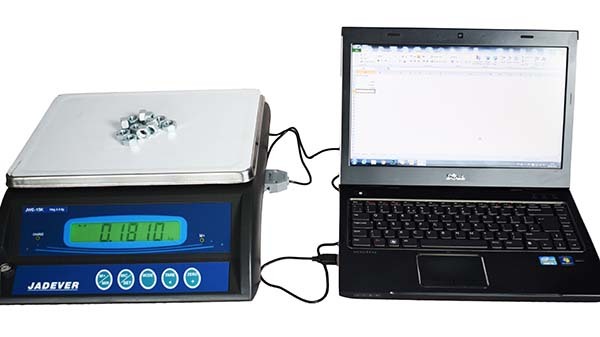Marsden Explain: How to Record Weight Data Easily

Pictured above: Jadever JCE Counting Scale.
At some point in its life, just about any commodity you can think of will be weighed.
The weight reading may be used to determine quantity - for example, if counting scales are used. An item may be weighed to ensure it won’t overload a container.
Or, it may be weighed to determine its price - like on a Trade Approved retail scale in a butcher’s or fishmonger’s shop, for example.
Weighing systems are increasingly being used by businesses to record data for referring back to for reports, for inventory control systems and for attaching to consignment details.
Easily Transfer Weight Data to Your Computer
To make weight data capture easier for businesses, there is now an inexpensive solution from Marsden: The Scale to USB Lead.

The Scale to USB Lead allows you to connect your scale to a computer, and when set up, will automatically transfer information, like weight or count, directly into an Excel spreadsheet. When purchasing a scale from the Marsden website, simply check that it has the RS-232 port and Scale to USB Lead optional extra. Choose this option, and then see how easy it is to transfer weighing data with this step-by-step guide.
1. Connect Your Scale to Your Computer
The Scale to USB Lead plugs into the RS-232 port on the scale (or on the indicator, depending on the scale you choose) and the USB port on the computer. Once connected, switch on the scale.
2. Set Up an Excel Spreadsheet
Open up a new Excel file, and then set it up as you wish the weighing data to go in. For example, if you are collecting counting data from a Jadever JCE counting scale, the scale will send unit weight, gross weight and count information to the spreadsheet each time items are added to the scale. Therefore, you may want to use three columns for this information, with a header at the top of each column.
For basic weight information, only one column is required.
Ensure the format of the cells matches that on the scale. For example, if the format on the indicator at zero is 0.000, make sure the cells are set to this format. To change the cell format, select all the cells you will be transferring data into, right-click and choose Format Cells. You can change the number of decimal places under the Number menu option.
3. Place the item or batch of items on the scale
Depending on the scale you’re using, the scale will either automatically transfer the data to the spreadsheet, or you will need to press Print on the indicator to transfer the data. The scale will need to return to zero - i.e, you will need to take the items off the scale - before another weight or count reading can be sent to the spreadsheet.
4. Send, save or print the recorded data
Once the weight or count data is in your spreadsheet, you can save it to a central database, send it to colleagues, or print it out!
You can see the Scale to USB Lead working, and transferring weight and count data, in the videos below.
This video shows the Jadever JCE Counting Scale being used to transfer data.
In this video you can see the Marsden HSS Stainless Steel Bench Scale with JIK Indicator hard at work.
Related Products
For more information about using weighing systems, and transferring weight or count data from a scale to a PC, call Marsden on 01709 364296.